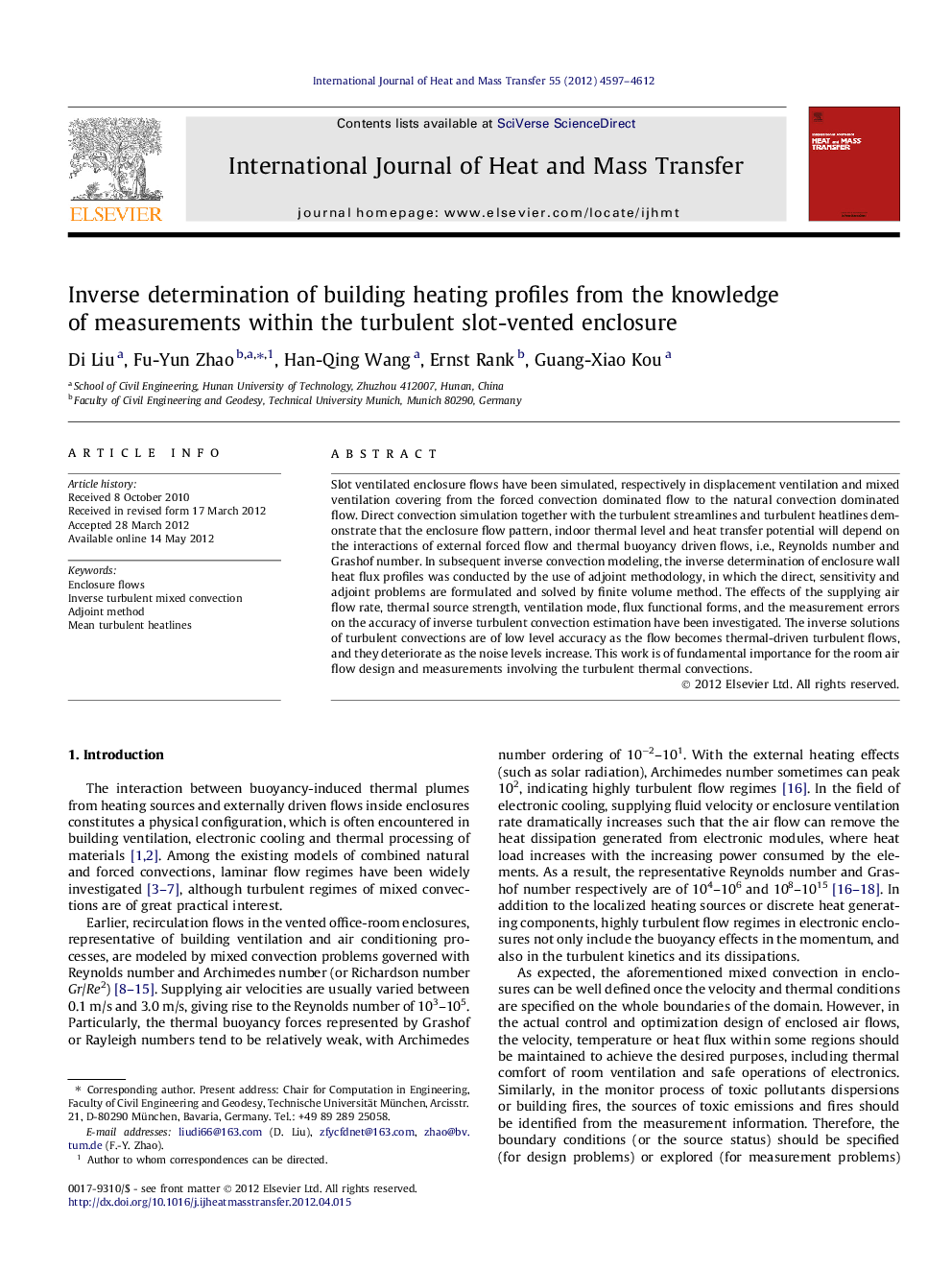| Article ID | Journal | Published Year | Pages | File Type |
|---|---|---|---|---|
| 659259 | International Journal of Heat and Mass Transfer | 2012 | 16 Pages |
Abstract
Slot ventilated enclosure flows have been simulated, respectively in displacement ventilation and mixed ventilation covering from the forced convection dominated flow to the natural convection dominated flow. Direct convection simulation together with the turbulent streamlines and turbulent heatlines demonstrate that the enclosure flow pattern, indoor thermal level and heat transfer potential will depend on the interactions of external forced flow and thermal buoyancy driven flows, i.e., Reynolds number and Grashof number. In subsequent inverse convection modeling, the inverse determination of enclosure wall heat flux profiles was conducted by the use of adjoint methodology, in which the direct, sensitivity and adjoint problems are formulated and solved by finite volume method. The effects of the supplying air flow rate, thermal source strength, ventilation mode, flux functional forms, and the measurement errors on the accuracy of inverse turbulent convection estimation have been investigated. The inverse solutions of turbulent convections are of low level accuracy as the flow becomes thermal-driven turbulent flows, and they deteriorate as the noise levels increase. This work is of fundamental importance for the room air flow design and measurements involving the turbulent thermal convections.
Keywords
Related Topics
Physical Sciences and Engineering
Chemical Engineering
Fluid Flow and Transfer Processes
Authors
Di Liu, Fu-Yun Zhao, Han-Qing Wang, Ernst Rank, Guang-Xiao Kou,
